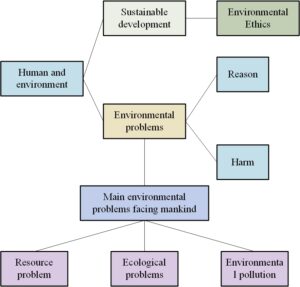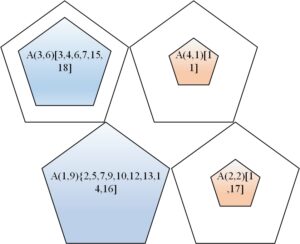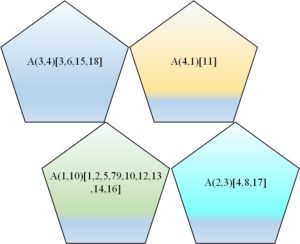
This paper explores the integration of big data technology into college English teaching models to enhance educational outcomes. We developed a Self-Organizing Feature Map (SOFM) neural network-based model for evaluating English teaching quality, aiming to identify factors that improve teaching effectiveness. The model was tested for its training and generalization capabilities, demonstrating fast convergence, high classification accuracy, and robust generalization. Our experimental results indicate that the proposed evaluation model effectively classifies teaching quality by analyzing the competitive layer’s winning neurons. This approach not only advances the assessment of teaching quality but also provides innovative pathways for enhancing university English education, aligning with modern educational needs and technological advancements.
College english education is an important form of deep and high quality development for students, and it is the key to helping students acquire skills in English language expression, cognition, and comprehension [1,2].However, there are many problems in the process of university English education in China, which seriously affects the effectiveness, efficiency and relevance of English education. . The author believes that English education should have the characteristics and features to keep pace with the times, to develop and improve itself in accordance with the needs of the times, and to broaden the scope of English education for human development. The most important tool for English education to keep pace with the times is intelligent generation [3,4].
However, the drawbacks of this multimedia-assisted teaching model have become increasingly apparent, such as the fact that the design of the curriculum does not meet the needs of individual students [5,6]; for example, in the online teaching process, students spend most of the time watching learning videos and rarely interact with each other, which makes students’ learning effects lack a kind of assessment and monitoring mechanism. With all the drawbacks of CAI teaching mode, there is an urgent need for a fast and effective learning system to solve this problem. With the rapid development of Internet technology, a set of methods can be developed to improve students’ English learning efficiency based on their mastery of English and the characteristics of each student’s English learning. With the increasing emphasis on digital learning, the M00C system for English learning with BP neural algorithm has been developed [7].
The reform of college English teaching based on web-based multimedia technology has become a hot topic of research in recent years. However, the learning environments discussed by scholars are relatively homogeneous, basically focusing on the network environment, multimedia environment, etc., covering only one aspect of university English teaching or students’ learning environment, without starting from the overall learning environment that language learners rely on and proposing and designing a multi-dimension learning environment (Multi-dimension Leaming Envimnment). Based on relevant research results, this paper attempts to further understand the intrinsic relationship between the learning environment of language learners and the effectiveness of college English teaching, and to propose and design a student-centered, multidimensional learning environment based on the learning environment that language learners rely on as a whole, so as to help students improve their comprehensive language skills and better promote college English teaching [8]. The evaluation of the quality of college English speaking classroom teaching is a large multidimensional system, and in the actual evaluation, there are biases caused by the subjective factors of the evaluators, which makes the evaluation system different from the general classroom teaching evaluation system, and most of the existing evaluation methods can only form quantitative evaluation in terms of component values, but cannot qualitatively classify the teachers’ classroom teaching effectiveness.
In this paper, we propose a self-organizing feature mapping (SOFM) neural network-based evaluation method for college English speaking classroom teaching, and programmed the SOFM network evaluation model based on MATLAB R2013a platform. The SOFM model was programmed and tested under different training steps. The simulation results show that the classification accuracy of the SOFM model is high and the classification results are more intuitive, which verifies the effectiveness of the method. Our method uses the environmental protection factor as an embedded representational feature to analyze its importance in the whole English teaching.
Environmental issues are the primary concerns of human development, but their distribution and manifestations vary greatly from region to region [9]. At present, the main global environmental problems are: population growth, overconsumption of resources, soil erosion, land degradation, deforestation, decline of biological species, shortage of water resources, increase in temperature, frequent natural disasters, and so on. The Xiang Education version of the textbook outlines three types of environmental problems: global environmental pollution, widespread ecological damage, and sudden and serious pollution events. The introduction of major environmental issues in each edition is mostly factual knowledge, which is of high interest to students [7,8]. Teachers can reduce classroom teaching and increase opportunities for students to learn independently and cooperatively, and encourage “student-student interaction” to share their knowledge. The main purpose of introducing environmental issues is to make students aware of the profound impact of these issues on human development. Depending on the level of students’ thinking, teachers can guide students to focus on understanding the complexity of environmental issues (see Figure 1).

Resource issues are linked to the need for “development” and only rational exploitation of resources can contribute to the sustainable development of human society, which is the second challenge in this chapter. For example, to protect arable land resources, reasonable conservation farming is the best way to develop the land ecosystem in a sustainable way, while for non-renewable resources such as minerals, conservation and development measures should be adopted to improve the depth and efficiency of utilization, increase the degree of recycling and research on alternative development of new resources. In essence, conservation and development are not contradictory, but the inertia of human beings opposes them. In specific teaching, we can develop students’ ability to analyze problems through debates and seminars. The issue of resources is an urgent issue in China’s current and future socio-economic development. Students can try problem-solving strategies in teaching and encourage them to explore corresponding countermeasures. For example, a typical region can be selected to discuss its development and available resources, or a particular resource problem (e.g. China’s iron ore import problem) can be the focus of research studies [1]. The focus of teaching should be on developing students’ ability to think dialectically and to synthesize and analyze information to solve problems (see Figure 2).

The interrelationship with the surrounding environment is in a relatively stable state, which is an important prerequisite for the orderly development of human society. At present, a large number of human activities have disrupted the ecological balance of nature and caused serious disorders in the structure and function of ecosystems, thus threatening the future survival and development of human beings [4]. Although there are many ecological problems caused by natural causes that also affect human survival and development, in teaching we should pay more attention to those environmental problems caused by human’s own unreasonable activities. These are problems that should not have arisen in the first place and can be avoided or eliminated through measures in future development. The curriculum uses case studies to understand the causes and processes of a particular ecological problem and the possible effects of the problem in one region on other regions (see Figure 3).

Environmental pollution has the most direct relevance to students’ personal lives and is likely to be of concern and resonance to high school students [2]. All editions of the textbook design this chapter to introduce the major global environmental pollution problems and then introduce some environmental pollution incidents through case studies. Teachers can encourage students to work independently or collaboratively to understand the basic knowledge provided in the textbook. In the case study section, students can use a backward process, starting with the hazards of the pollution event to draw attention to their own health and safety and that of the people around them, and then analyzing the process of the pollution event to find out the causes of the event and the irrational human activities behind the seemingly simple pollution event. Once these causes have been identified, it is easier to explore measures to prevent and control such pollution. In the process of exploring solutions, it is recommended that good topics be chosen for research activities, and that they be combined with comprehensive practical activities such as community service in areas where conditions are favorable (see Figure 4).

The learning algorithm of the SOFM neural network is as follows: let \(x={x_1},{x_2},,,{x_n}\) be the input n-dimensional The training sample vector \(w_i^\prime (k)=[{w_1}(k)],{w_2}(k),,,{w_n}(k)]\). A small random weight is used to initialize the network, and the training sample vector is normalized according to Eq. (1).
\[\label{eq1} {x^\prime } = \frac{x}{{x}}.\tag{1}\]
\[\label{eq2} w_i^\prime (k) = \frac{{{w_i}(0)}}{{\left\| {{w_i}(0)} \right\|}}.\tag{2}\]
The new input sample vector from the input sample space counts x’.
Calculate the resulting winning neuron A according to Eq. (3).
\[\label{eq3} \left\| {{x^\prime } – w_A^\prime } \right\| = {\min _i}\left\| {{x^\prime } – w_i^{\prime \prime }} \right\|,\quad (i = 1,2{\text{,}}3, \cdots ,N).\tag{3}\]
Obtain the neighborhood neuron \(A(k)\) of the winning neuron according to Eq. (4).
update the connection weights of the neighborhood neuron \(A(k)\) of the winning neuron according to Eq. (5). In Eq. (5), \(\eta (k)\) is the update learning rate.
\[\label{eq4} A(k) = INT\left[ {A(0)\left( {1 – \frac{k}{N}} \right)} \right].\tag{4}\]
\[\label{eq5} {w^\prime }(k + 1) = {w^\prime }(k) + \eta (k)\left[ {{x^\prime } – w_i^\prime (k)} \right].\tag{5}\]
The updated weights are re-normalized according to Eq. (6).
\[\label{eq6} w_i^\prime {(k + 1)_{{\text{new }}}} = \frac{{w_i^\prime (k + 1)}}{{\left\| {w_i^\prime (k + 1)} \right\|}}.\tag{6}\]
If the number of iterations \(k=<N\), add 1 to the value of \(k\) and go to step 2, otherwise the iterative process is finished.
In this paper, we take the teaching quality of 18 English teachers’ oral classes in a university as the research object and establish a teaching quality evaluation model based on SOFM neural network. In this paper, we refer to the index system of evaluation of teaching level in general colleges and universities, combine the questionnaires of teachers and students, and consult with experts and supervisors in related fields, and finally establish the evaluation indexes covering four parts: teaching department, students, peers and supervisors [9]. In this paper, we evaluate and classify the training sample set in Figure 5, and finally determine the topology of the competing neurons as a 2*2 two-dimensional array after repeated trials and considering the complexity and classification accuracy of the model.
The BP neural network has a multilayer unidirectional propagation network, and the input and output have a strong nonlinear mapping relationship. The network is used to measure the teaching effectiveness procedure of English M00C system, as shown in Figure 5.

In the process of system learning effect evaluation by BP neural network, the first step is to normalize various evaluation indexes of system learning effect, and the processing result is used as the input vector of BP neural network, so that the learning effect is changed from abstract form to quantified form as the output vector. In the second step, the BP neural network is combined with relevant experts’ empirical knowledge, and a certain number of training samples are used to make the BP neural network self-adaptive learning and adjustment of the weights until the neural network can represent the knowledge more accurately [6]. In the third step, the trained BP neural network model is used to evaluate the teaching effectiveness of the English M00C system. The student’s learning can be evaluated fairly, objectively, and accurately according to the indicators collected by the system .
.
The SOFM network evaluation model is used to evaluate the teaching quality of 18 English teachers in a university, and the process is as follows:
1) the SOFM network model is programmed based on MATLAB R2013a software platform;
2) the model is trained with the teaching quality evaluation indicators in Table 1 as training samples, and after the training, the model represents the evaluation results in the form of the positions of the winning neurons in the competition layer;
3) the evaluation model is tested for generalization ability.
4) The evaluation model is tested for generalization ability, and if the position of the winning neuron in the competitive layer is the same as that of a standard training sample, it means that the test sample belongs to the same category as the corresponding standard training sample.
The SOFM evaluation model developed in the paper is trained using the samples in Table 1. Since the number of training steps directly affects the clustering effect of the model, the number of training steps is set to Epochs=20, 50, 150, and the classification effect is tested. The simulation experiments show that the evaluation model can achieve the mapping from the sample number and the node position of the winning neuron to the competitive layer of the evaluation model after repeated training. Table 1 shows the characteristic mapping of the output layer of the evaluation model under different training steps [5].
| Evaluation Indicators | Teacher Order | |||||||||||||||||
| 1 | 2 | 3 | 4 | 5 | 6 | 7 | 8 | 9 | 10 | 11 | 12 | 13 | 14 | 15 | 16 | 17 | 18 | |
| X1 | 10 | 10 | 9 | 10 | 10 | 10 | 10 | 10 | 10 | 10 | 10 | 10 | 10 | 10 | 10 | 10 | 10 | 10 |
| X2 | 10 | 10 | 9 | 9 | 10 | 10 | 10 | 10 | 10 | 10 | 9 | 10 | 10 | 10 | 10 | 10 | 10 | 9 |
| X3 | 10 | 9 | 9 | 10 | 10 | 8 | 10 | 10 | 10 | 10 | 9.5 | 10 | 10 | 10 | 10 | 10 | 10 | 9 |
| X4 | 9 | 8 | 9 | 7.5 | 8 | 9 | 8.5 | 7 | 8 | 8.5 | 6.5 | 9 | 7.5 | 8 | 8.5 | 7.5 | 9 | 7 |
Simulation experiments show that after the model is trained, there must be a specific neuron in the competitive layer that is sensitive to each of the standard training samples of the input. As shown in Figure 6, when epochs=20, neurons 1-4 in the competitive layer are sensitive neurons, i.e., winning neurons, and the model divides the set of training samples in this study into four categories. Samples 1 and 17 in the sample set excite neuron number 2 in the competitive layer and make it win, i.e., samples 1 and 17 are classified as one class, which is inconsistent with the expert evaluation results, and the model incorrectly classifies sample number 1 as the second class. The model incorrectly classifies samples 4 and 8 as the third category, which means that the model is only classifying the samples initially and the classification accuracy is low.
As shown in Figure 7, when epochs=50, neurons 1-4 in the competitive layer are the winning neurons, and the model classifies the samples in Table 1 into 4 classes. The model classifies samples 4, 8, 15, and 17 into one category, which is inconsistent with the expert evaluation results, and the model incorrectly classifies sample 15 as the second category. Nevertheless, it shows that the model can improve its classification accuracy by increasing the number of training steps (see Figures 6 and 7).


In order to test the generalization ability of the SOFM evaluation model, the sample data in Table 2 was used for testing. The simulation results are shown in Figure 8. It can be seen that the test samples C1, C2, C3, and C4 excite the neurons 1, 2, 3, and 4 of the competitive layer of the model to make them win respectively, and the positions of the winning neurons are exactly the same as those of the winning neurons in Figure 9, i.e., the constructed evaluation model successfully classifies the test samples in Table 2 into four categories, and the evaluation results are exactly the same as the expert evaluation results (see Table 2 and Figures 8 and 9).
| Evaluation Indicators | X1 | X2 | X3 | X4 | X5 | X6 | X7 | X8 | X9 | X10 | Expert evaluation | |
| Teacher serial Number | C1 | 9 | 9.5 | 9 | 7 | 7.5 | 6.5 | 7 | 6.5 | 8.5 | 9 | I |
| C2 | 8.5 | 8 | 7 | 7.5 | 7 | 6 | 7 | 7 | 7.5 | 7 | II | |
| C3 | 9 | 9 | 8.5 | 8 | 8 | 7.5 | 8 | 8 | 8 | 8 | III | |
| C4 | 10 | 10 | 9 | 8.5 | 9 | 9.5 | 9 | 9.5 | 8.5 | 9 | IV |


Online learning and mobile learning have brought diversity to students’ learning activities. Teachers need to keep up with the times, improve their educational skills, and strive to create a learning environment that enhances students’ learning outcomes. In this paper, we propose a method to evaluate the quality of English teachers’ classroom teaching by using s0FM neural network, and establish a model to evaluate the quality of teachers’ classroom teaching by using the specific response relationship between neurons in the competing layer and neurons in the losing layer. The simulation results show that the SOFM evaluation model achieves 100% classification accuracy for both training and test samples, which indicates that the model has strong generalization ability and validates the effectiveness of the model.
This work was supported by Research on the Application of Online and Offline Hybrid Teaching Mode in College English Writing(WYZL2022XJ0002).